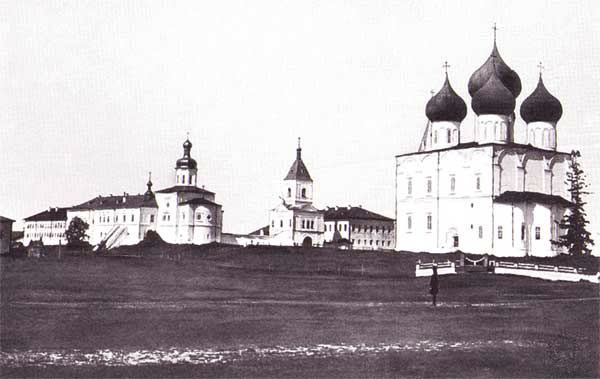Local time Monday 10:02 AM | ||
 | ||
Weather -4°C, Wind NW at 6 km/h, 72% Humidity | ||
The fedederal highway m8 kholmogory
Kholmogory (Russian: Холмого́ры) is a historic rural locality (a selo) and the administrative center of Kholmogorsky District of Arkhangelsk Oblast, Russia. It lies on the left bank of the Northern Dvina River, along the Kholmogory Highway, 75 kilometers (47 mi) southeast of Arkhangelsk and 90 kilometers (56 mi) north of the Antonievo-Siysky Monastery. The name is derived from the Finnish Kalmomäki for "corpse hill" ("cemetery"). Population: 4,150 (2010 Census); 4,592 (2002 Census); 5,205 (1989 Census).
Contents
Map of Kholmogory, Arkhangelsk Oblast, Russia, 164530
The Kholmogory area was at first in historical times inhabited by the Finno-Ugrians "Savolotshij Thsuuds", (sa-volokis, i.e. "the Chud [who live] beyond the portage"), known also as Yems in old Novgorod chronicles, and Karelians. The first Slavonic population to enter to Kalmamäki were Pomors from Vologda area after 1220. As early as the 14th century, the village (the name of which was then spelled Kolmogory) was an important trading post of the Novgorod Republic in the Far North of Russia. Its commercial importance further increased in 1554 when the English Muscovy Company made it a center of its operations in furs. The Polish-Lithuanian vagabonds (see Lisowczycy) besieged the wooden fort during the Time of Troubles (1613), but had to retreat in failure. In the course of the 17th and 18th centuries, the settlement was also a place of exile, notably for ex-regent Anna Leopoldovna and her children.
In 1682, the six-pillared Kholmogory cathedral was consecrated; the biggest in the region. It was disfigured by the Communists in the 1930s. Many ancient wooden shrines and mills, however, still survive in the neighborhood. One of the nearby villages is the birthplace of the Russian polymath Mikhail Lomonosov. Local artisans—such as Fedot Shubin—have been famed for their craft of carving the tusks of mammoths and walruses.
In Kholmogory, a craft of Kholmogory bone carving was developed in the 17th century. The bone carvings from Kholmogory were notable for excellent craftsmanship and perfected technique. The best carving masters from Kholmogory were invited to work in the Kremlin Armoury, which performed orders for the tsar’s court. The handicraft reached its peak under the reign of Peter the Great. Currently the carving is being performed at the Lomonosov Bone Carving Factory.
